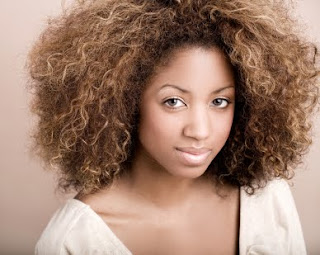Loss of elasticity, serious damage and severe breakage are the three main reasons for protein treatments. Hair is made up of keratin, which is a type of protein. When hair is colored, damaged by heat or a chemical is applied to it, protein is lost causing the hair to lose some of it's elasticity and strength.
Much of the daily care and the little extras that you do to create a hairstyle chip away at your hair's cuticle, or outer layer. Protein treatments work to build the hair shaft back up, a monthly or bi-monthly treatment will keep it in shape. You can use products that contain protein to improve your hair's elasticity and strength or create your own. Just remember to balance protein with moisture, because too much protein will eventually dry your hair out and cause shedding and/or breakage.
Basic Protein Treatment #1
1-2 c conditioner (adjust according to the thickness and length of your hair)
1 Egg
2 Tbsp Extra Virgin Olive oil
8-10 drops Peppermint Oil
Basic Protein Treatment #2
1 Avocado
1/2-1 c Plain Yogurt
2 Tbsp Castor oil
5-8 drops Lavender oil
Thoroughly mix ingredients together. Section hair into four parts and apply treatment to each section. Be sure to work the treatment from the root of the hair to the ends. Place a plastic cap/bag on and wrap a towel on top of it so that the body's heat can help penetrate the treatment into the hair shaft. Let sit for 30 minutes and rinse out with warm water.


